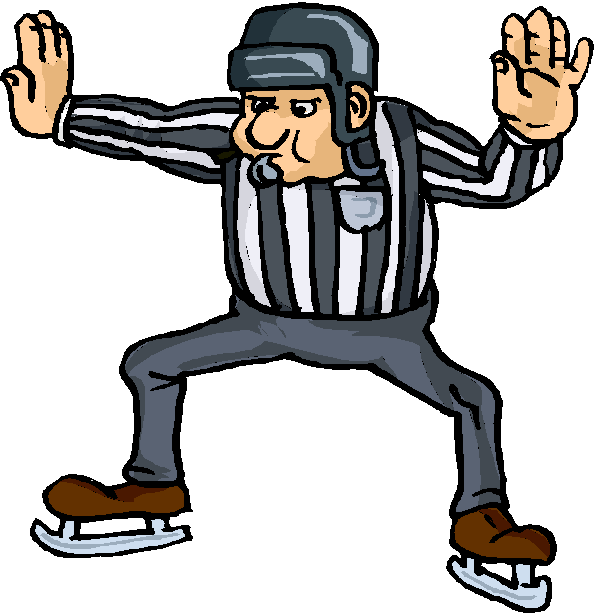The Men in Stripes
Posted by: ron With hockey season just a few days away, it’s apparent that officiating is not just on the minds of bitter fans who felt they were robbed last season, but also on the minds of coaches who must constantly adjust to not only the new rule changes, but also the way that the referees will interpret them.
With hockey season just a few days away, it’s apparent that officiating is not just on the minds of bitter fans who felt they were robbed last season, but also on the minds of coaches who must constantly adjust to not only the new rule changes, but also the way that the referees will interpret them.
I spoke with St. Lawrence head coach Joe Marsh last week who is entering his 21st season being the Saints bench about the upcoming season. One of the factors he named regarding how well his team will do this year is how well the coaching staff and his players can adjust to the way the game is called. Anyone that is familiar enough with college hockey, knows if it’s on someone like Coach Marsh’s mind, it’s probably on every coach’s mind.
While the only major rule change this year involves the nullification of icing on a playable pass, Coaches and players are still struggling with the referee’s interpretations of hitting from behind and obstruction-interference rules added over the past season. One game’s obstruction interference is the next game’s great defensive play.
This year, the hitting from behind penalty has been clarified, only allowing a minor to be given if the infraction is in “open ice.” It remains a major penalty along with a DQ or misconduct otherwise. The rules involving obstruction remain the same, meant to get rid of the “clutch and grab” of old, while moving hockey towards a fast and flowing style of game, reminscent of the “New NHL.”
We’ll likely be shaking our heads when our favorite player is sent off when a player turns his back at the last second, or a slight push on the back is embellished, but hopefully this will be less so if the officials call these penalties on a consistent basis.
In many cases last year a prat-fall near the boards or a forward raising his hand around a defenseman with one hand on his stick meant a trip to the box. Calling these penalties has effectively discouraged dangerous actions such as boarding, but has also increased the level of dramatic performances on the ice to an extent that De Niro would be proud.
The Rules Committee took note on this increase in embellishment and is requesting officials to penalize more often for tactics such as diving, and we’re starting to see more being called. But until referees can really get to the bottom of diving and nail people (how many diving penalties have you seen in the past two years?) this will remain a game of cat and mouse with the refs. The problem is, referees must err on the side of caution, and that always means erring on the side of the player that appeared to get hit. Until the refs can get a hold of the diving issue or are provided with stronger tools such as suspensions to deter it after the fact (see the “New NHL”) we’ll be seeing a lot of frustration and a lot of adjusting throughout the season.
How do you think the officials will pan out this season in your conference and how well do you think your team will be able to adjust to way officials call the game?